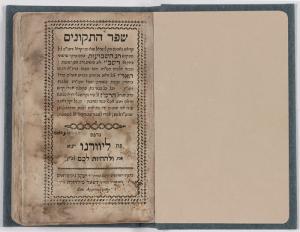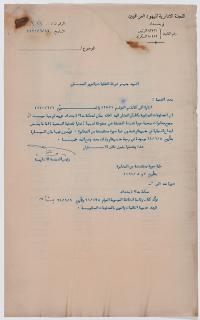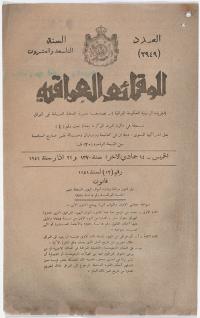After Millenia
The unraveling of Jewish life in Iraq began in the 20th century, accelerating after the advent of Nazism to power in Germany and the proliferation of anti-Jewish propaganda. In June 1941, in the aftermath of the defeat of the pro-Nazi Iraqi regime, an anti-Jewish attack broke out in Baghdad during the Jewish festival of Shavuot. The unprecedented attack, known as the “Farhud,” shattered the sense of safety and security of the Jews.
As Iraq entered the war against the newly founded State of Israel in 1948, Iraqi Jews were increasingly arrested and persecuted. In September 1948, a prominent Jew in Iraq was publicly executed for the alleged crime of treason. Although losing citizenship and assets, Iraqi Jews rushed to emigrate, resulting in an airlift to Israel known as Operation Ezra and Nehemiah. In 1950 and 1951, almost 120,000 Jews left Iraq, leaving only a small number behind to continue the community’s 2,600-year-old presence.
Shavuot 1941: The Farhud
The festival of Shavuot celebrates the harvest and the giving of the Ten Commandments on Mount Sinai. However, the Shavuot of 1941 was unlike any other holiday in the millennia of Iraqi Jewish experience, and it proved to be a turning point for this community. In 1941, the Farhud, an unprecedented anti-Jewish outbreak of violence, forever ended the comfort, safety, and continuity of Iraqi Jewry. Following the collapse of a short-lived pro-Nazi government and before British forces entered Baghdad, violent rioting ensued. From June 1 to 2, 1941, an estimated 180 Jews were killed and hundreds were injured, while great numbers of Jewish homes and businesses were looted and destroyed.
A Reduced Community
The community continued to function to the extent possible from 1950 through the 1970s despite significant constraints. The recovered documents provide a vivid picture of the persistence of Jewish organizational life in Baghdad with the dwindling numbers of Jews and increasing insecurity. Jews and other minorities faced ongoing persecution following the revolution of 1958 and the rise of the Baathist Party in 1963, culminating in the public hanging of nine Jews in January 1969.



